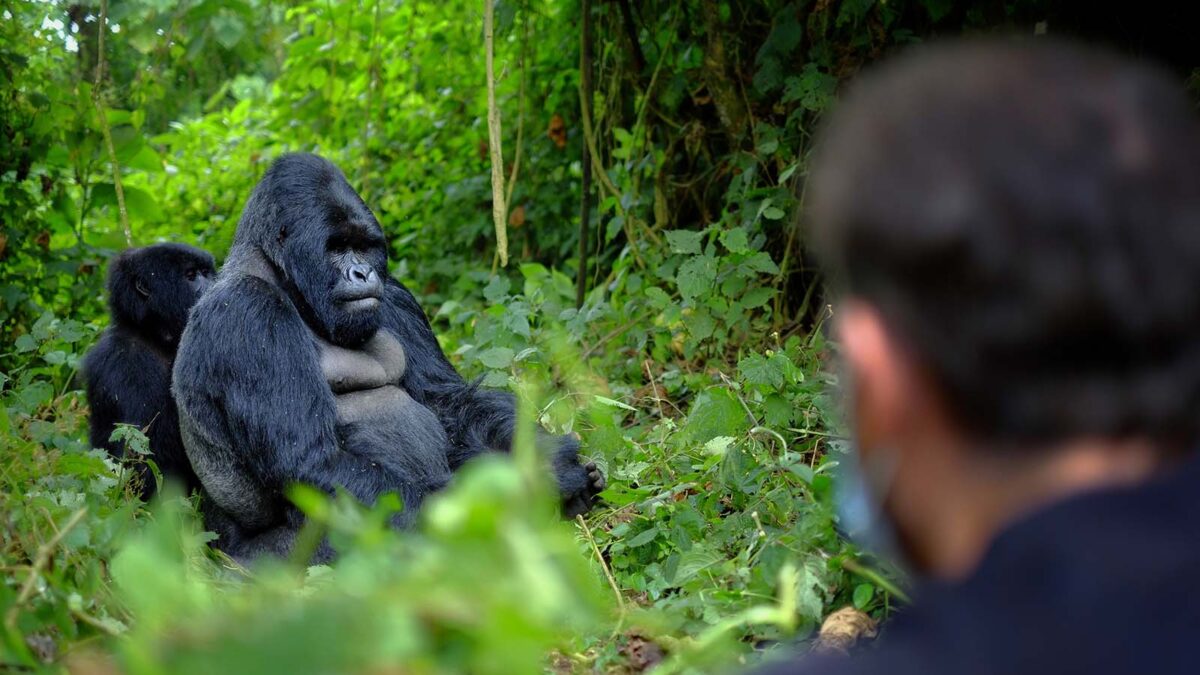Rwanda Gorilla Tracking Rules and Regulations

Rwanda Gorilla Walking Tours and Safaris
September 14, 2023Rwanda Gorilla Tracking Tours for Elderly
September 14, 2023Rwanda Gorilla Tracking Rules and Regulations – Guidelines for Meeting Mountain Gorillas in Their Natural Habitat: Do’s and Don’ts
Gorilla Tracking in Rwanda
For those embarking on the extraordinary adventure of Gorilla trekking in Rwanda, understanding the rules and regulations is paramount. The Rwanda Development Board has outlined essential Gorilla tracking do’s and don’ts that every visitor must adhere to. These guidelines, issued in printed leaflets by the Rwanda Development Board (commonly referred to as Gorilla rules), are crucial for ensuring the safety and well-being of both visitors and the magnificent Mountain Gorillas.
Before Your Gorilla Tracking Walk in Rwanda
- A group of habituated mountain gorillas can host a maximum of 8 visitors per day. This limitation minimizes behavioral disturbances to the gorillas and mitigates the risk of human-borne diseases.
- Prior to heading out to meet the Gorillas, it is essential to wash your hands thoroughly.
- Maintain a hushed demeanor during your journey to the Gorilla habitat. This allows you to appreciate the rich birdlife and other wildlife within the forest.
- Leave no trace: Do not litter in the park. Anything you bring into the forest should be carried back out with you.
- Your trek will begin from where the guides observed the gorillas the previous day. Follow their lead as you trail the gorillas and keep an eye out for their nests along the way.
When You Are With the Gorillas
- Maintain a distance of 7 meters (21 feet) from the Gorillas at all times. The farther back you stay, the more relaxed the Gorilla group will be.
- Stay within your designated group when in close proximity to the gorillas.
- Keep your voices low at all times, but feel free to ask your guide questions.
- Avoid smoking, drinking, or eating in the presence of the gorillas, as these activities can increase the risk of food or drink droplets falling and potentially transmitting diseases.
- Be prepared for Gorilla charges. Follow your guide’s example by crouching down slowly, avoiding direct eye contact, and waiting for the animals to pass. Running away is discouraged, as it can escalate the risk.
- Flash photography is strictly prohibited. When taking pictures, move slowly and with care.
- Never attempt to touch the Gorillas, as they are wild animals.
- The maximum duration of your visit with the Gorillas is one hour. However, if the Gorillas become agitated or nervous, the guide may conclude the visit earlier.
General Health Rules
- Mountain gorillas are highly susceptible to human diseases. To minimize the risk of disease transmission, it is crucial to adhere to the following health guidelines:
- Respect the visitor limits imposed on daily gorilla visits. This helps reduce the risk of disease transmission and minimizes stress on the gorilla group.
- If you feel unwell or are carrying a contagious disease, volunteer to stay behind. An alternative visit will be arranged for you, or you will receive a refund.
- If you need to cough or sneeze in the presence of the gorillas, turn your head away and cover your nose and mouth to minimize the spread of bacteria or viruses.
- Maintain a minimum distance of 7 meters (21 feet) from the Gorillas at all times to protect them from human diseases.
- Do not leave any litter, such as food wrappers, in the park, as foreign items can carry diseases or contaminants.
- If nature calls while in the forest, request that your guide dig a hole with a panga (machete) for you. Ensure the hole is 30 cm deep and fill it in after use.
How to Get to Volcanoes National Park
Volcanoes National Park is situated in the quaint village of Musanze, formerly known as Ruhengeri. It is easily accessible by public transport from Gisenyi, Kigali City, or Kigali International Airport. The drive to the national park takes approximately 2-3 hours, allowing visitors to engage in Gorilla tracking on the same day and return to Kigali after the trek. To ensure punctuality, it is essential to arrive at the National Park headquarters in Kinigi by 7:00 am. However, please note that there is no public transport available from Musanze to the National Park headquarters at Kinigi.
Best Time to Visit
Rwanda welcomes Gorilla tracking enthusiasts year-round. However, certain seasons offer more favorable conditions. The dry seasons, spanning December to early March and June to September, are highly recommended for travel. December to March constitutes an extended dry period, with temperatures occasionally reaching 29 degrees Celsius. Conversely, March to mid-May and July to September are classified as the rainy seasons.
While Rwanda enjoys favorable weather throughout the year, the dry season is preferable. During this time, the climate is generally pleasant, wildlife viewing is more common, and there is minimal rainfall during Gorilla treks. Waterproof clothing is still advisable due to the unpredictable equatorial climate. It’s important to note that the dry season is also a peak tourist season, potentially resulting in higher prices for accommodation and other services.
Conversely, budget-conscious travelers may opt for the wet season, during which hotels offer reduced rates due to lower occupancy. Additionally, there is reduced demand for Gorilla permits, ensuring a chance to encounter these endangered species without competition.

